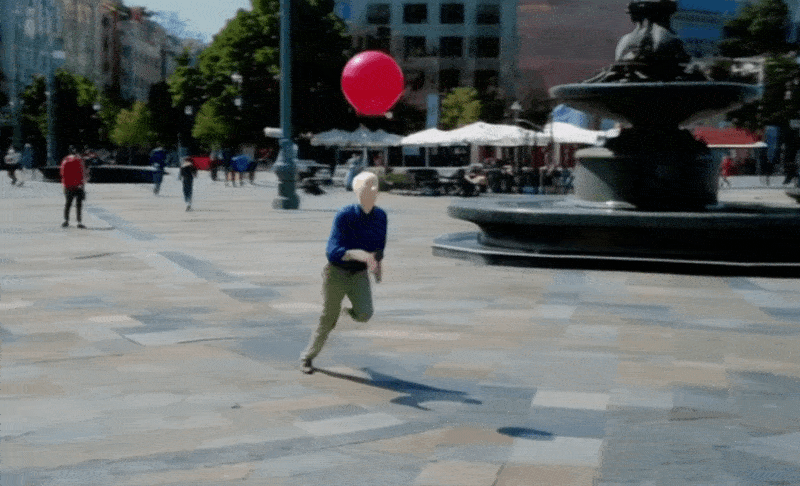Creator of Sora-powered brief explains the strengths and limitations of AI-generated video
4 min readOpenAI’s video era software Sora Surprised the AI neighborhood in February With fluid, real looking video that feels miles forward of the competitors. But the fastidiously stage-driven debut neglected a variety of particulars – particulars which were stuffed in by a filmmaker who was given early entry to create a brief movie utilizing Sora.
Shy Kids is a Toronto-based digital manufacturing crew that was chosen by OpenAI as one of many few to make brief movies Originally for OpenAI promotional functions, though they got appreciable artistic freedom In making “air head”. in a single Interview with visible results information outlet FXGuidePost-production artist Patrick Cederberg described “actually using Sora” as a part of his work.
Perhaps an important takeaway for many is that this: whereas OpenAI’s publish highlighting the shorts might have led readers to imagine that they had been composed kind of totally of Sora, the truth is that these had been skilled productions, with robust storyboarding, enhancing, , had been full with coloration correction. And publish work like rotoscoping and VFX. Just like Apple says “shot on iPhone” however does not present studio setup, skilled lighting and coloration work after the very fact, Sora publish solely talks about what it lets individuals do, not what they did. How to truly do it.
Cederberg’s interview is attention-grabbing and pretty non-technical, so for those who’re , go to fxguide and browse this, But there are some attention-grabbing issues about Sora’s use right here that inform us that, as spectacular as this mannequin is, it is much less of a giant leap ahead than we thought.
Control remains to be the factor that’s most fascinating and likewise most elusive at this level. …The closest we might get was to be hyper-descriptive in our indicators. Explaining the wardrobe for the characters, in addition to the balloon sort, was our manner of getting round consistency as a result of there isn’t a characteristic set but for full management over consistency, shot to shot/era to era.
In different phrases, issues that will be easy in conventional filmmaking, corresponding to selecting the colour of a personality’s clothes, require elaborate workarounds and checks in a generative system, as a result of every shot is impartial of the others. This can clearly change, nevertheless it’s undoubtedly much more work for the time being.
The Sora output additionally needed to be watched for undesirable parts: Cederberg defined how the mannequin would often generate a face on the balloon meant for the principle character’s head, or a string hanging off the entrance. If no sign to exclude them may very well be obtained, these needed to be eliminated later, which was one other time-consuming course of.
Precise timing and actions of the characters or the digicam will not be actually potential: “There’s a little bit of temporal control about where these different actions happen in the actual generation, but it’s not precise…it’s like a shot in the dark. Is,” mentioned Cederberg.
For instance, not like handbook animation, timing a gesture like a wave is a really predictable, suggestion-driven course of. And a shot like a pan upward over the character’s physique might or might not mirror what the filmmaker wished – so on this case the crew offered a shot composed in portrait orientation and did a crop pan in publish. The clips generated had been additionally usually in sluggish movement for no specific purpose.

Example of a one shot that originated from Sora and the way it ended up within the brief. Image Credit: shy children
In truth, utilizing the on a regular basis language of filmmaking, corresponding to “panning right” or “tracking shot” had been usually inconsistent, Cederberg mentioned, which the crew discovered fairly shocking.
“Researchers weren’t really thinking like filmmakers before they approached artists to play with this tool,” he mentioned.
As a end result, the crew made a whole lot of generations every 10 to twenty seconds, and ended up utilizing solely a handful. Cederberg estimated the ratio at 300:1 – however certainly we might all be stunned on the ratio for a easy shoot.
actually crew Made a little bit behind the scenes video If you are curious, we’ll stroll you thru among the points they’ve confronted. Like a variety of AI-adjacent stuff, The feedback are fairly essential of the whole effort – Although not as scandalous The AI-assisted advertisements we just lately noticed pilloried,
The final attention-grabbing criticism issues copyright: for those who ask Sora to present you a “Star Wars” clip, she’ll refuse. And for those who attempt to get round it with “cloaked guy with laser sword on retro-futuristic spaceship”, it’ll refuse too, as a result of by some mechanism it acknowledges that is what you are making an attempt to do. . It additionally refused to do an “Aronofsky type shot” or a “Hitchcock zoom”.
On the one hand, this makes excellent sense. But this raises the query: If Sora is aware of what these are, does that imply that if the mannequin was skilled on that content material, it could be higher in a position to acknowledge that it’s infringing? OpenAI, which retains its coaching information playing cards near the vest, to the purpose of absurdity CTO Mira Muratti’s interview with Joanna Stern – will nearly definitely by no means inform us.
As far as Sora and its use in filmmaking is anxious, it is clearly a strong and useful gizmo as a substitute, nevertheless it’s not a substitute for “making movies from whole cloth”. As but. As one other villain as soon as famously mentioned, “He comes later.”
(TagstoTranslate)Generative AI(T)Generative Video(T)OpenAI(T)Sora

